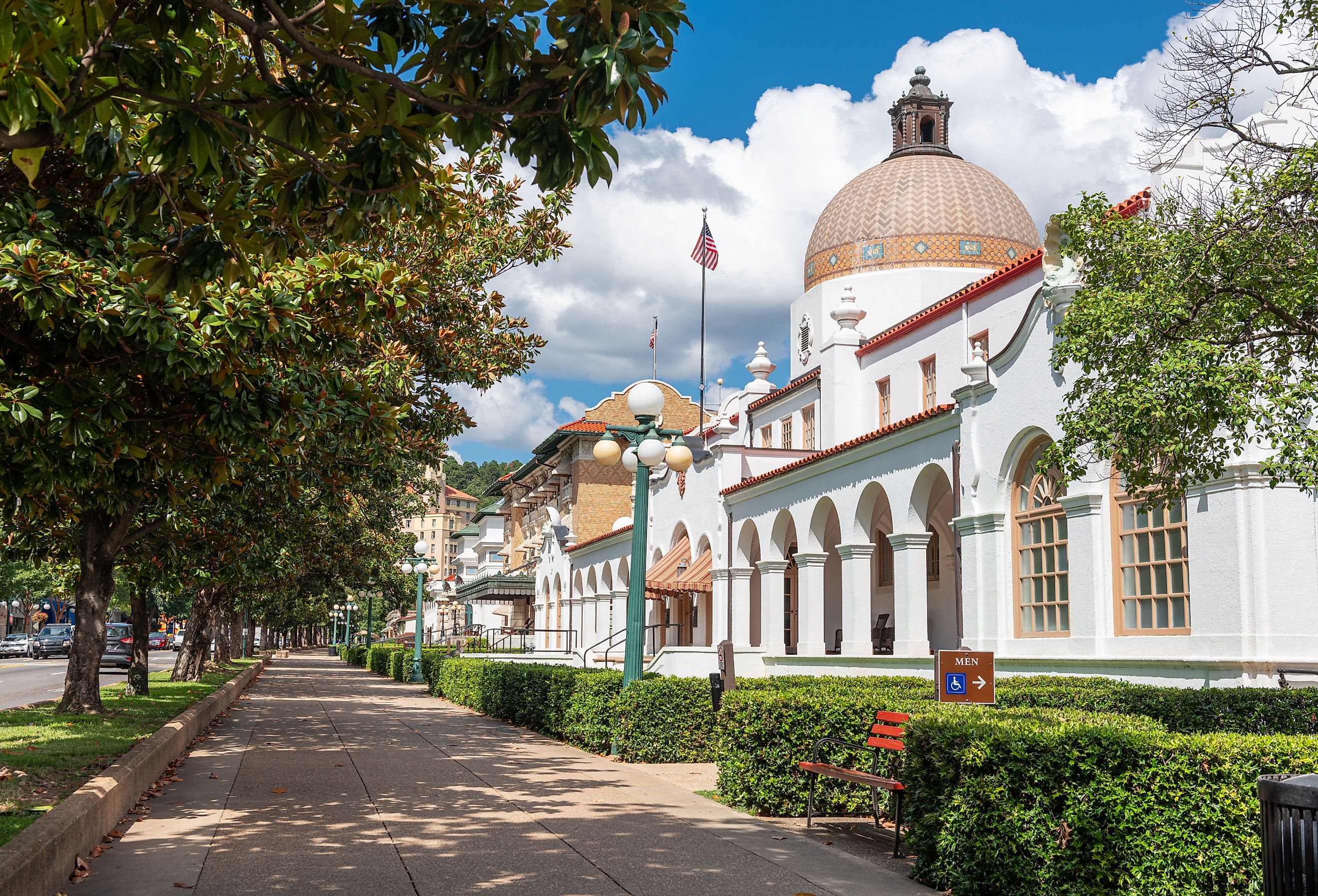
9 Must-See Historic Towns in Arkansas
Arkansas has a rich history that dates back thousands of years. As early as 11,700 BCE, Indigenous peoples already inhabited these lands. By 1541, the first Europeans arrived in the area and soon created settlements and trading posts. In 1836, the area received statehood and was given its present name. During its early days, Arkansas depended heavily on institutional slavery, and that soon led to its secession from the Union along with 10 other states, effectively starting the American Civil War.
Today, this state is rich in history and culture, and its towns are some of the best places to learn more about its early days. From Hot Springs to Pocahontas, discover the most historic towns in Arkansas to visit for a full dose of the state’s history.
Arkadelphia
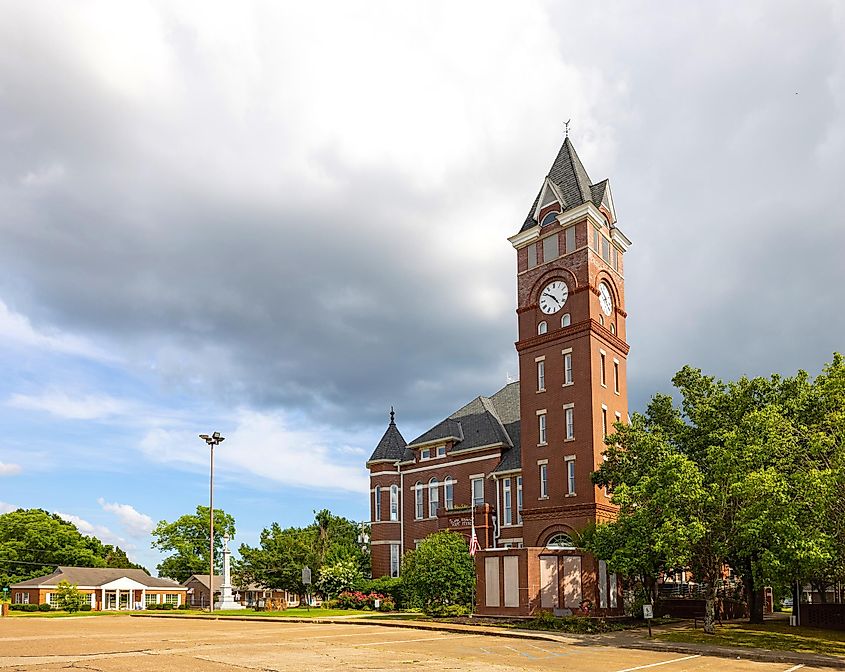
Arkadelphia is a scenic and historic town on the foothills of the Ouachita Mountains, with a history dating back to around 1811 when a man known as John Hemphill first settled on the land. But there is more to this town’s history, and the Clark County Historical Museum is the best place to learn more about the entire county’s iconic past from prehistoric times to the Civil and World War eras. Don't just settle for one historic experience, as the downtown is riddled with historic buildings and landmarks to explore
These include the Clark County Courthouse (built in 1899 and featuring the Arkadelphia Confederate Monument), The Clark County Library (constructed in 1903), and James E. Barkman House (built in 1860). Relax afterward or enjoy fishing and boating in DeGray Lake Resort State Park, located about eight miles north of the town.
Pocahontas

Pocahontas is one of the oldest and most historic towns in Arkansas. This port town by the Black River was first settled by Dr. Ranson Bettis, who built a home on a limestone bluff in the area in 1827. The settlement was initially named Bettis Bluff after its first settler but was eventually changed to Pocahontas for reasons still unknown. The name, however, belongs to a Native American woman from Jamestown, Virginia, and a statue of this woman can be seen in Overlook Park along the Black River.
Tourists to this town today can head to the Randolph Heritage Museum to revisit its interesting history while browsing through the museum’s artifacts, exhibits, and photography. Visitors can also explore the town’s historic district and have a haircut at Sanitary Barbershop, which is the oldest continuously operating barbershop in Arkansas, or purchase a tablet at Futrell Pharmacy, the oldest drug store in the state. Additionally, walk the state's first Quilt Trail, which is home to many life-size quilts to use as a backdrop for pictures.
El Dorado

The historic town of El Dorado was founded when Matthew Rainey settled in the area in 1843, and the same year, it became the seat of Union County. The town became famous for the 1920s oil boom, also making it the headquarters of the Arkansas Oil and Gas Commission. Today, visitors can learn more about the town's history as an oil and gas hub at the downtown Oil Heritage Park which features artifacts, sculptures, descriptive plaques, and special programs.
The Newton House Museum is another historic highlight worth visiting as it was built around 1849 by the town's founder, Matthew Rainey, making it the oldest house in El Dorado. Before leaving, visit the Union County Courthouse to marvel at its Classical and Greek Revival architecture and wrap up with a delicious meal at Fayrays, one of the best restaurants in downtown El Dorado.
Van Buren
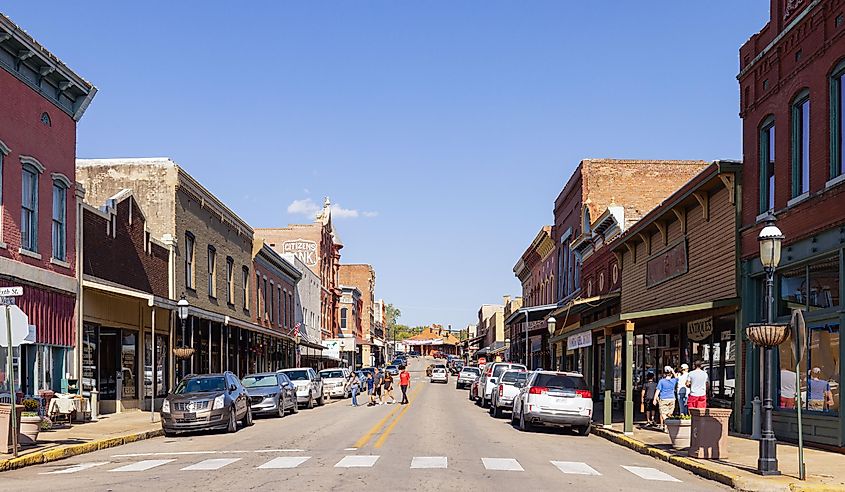
The history of Van Buren dates to the early 1818 when it was first settled by Thomas Phillips. In 1842, the town was incorporated and named after Martin Van Buren, who was the secretary of state during the administration of President Andrew Jackson. Visitors to the town today can delve right into its historic essence by exploring its downtown historic district, which occupies six blocks and comprises restored buildings from the late 1800s and early 1900s. These buildings now house antique shops, art galleries, and attractions like the Crawford County Bank and Courthouse and the King Opera House, which regularly hosts entertaining performances.
For something even more exciting, visitors can experience the train ride from Van Buren to Winslow to see the beautiful Boston Mountain range of the Ozarks.
Pine Bluff
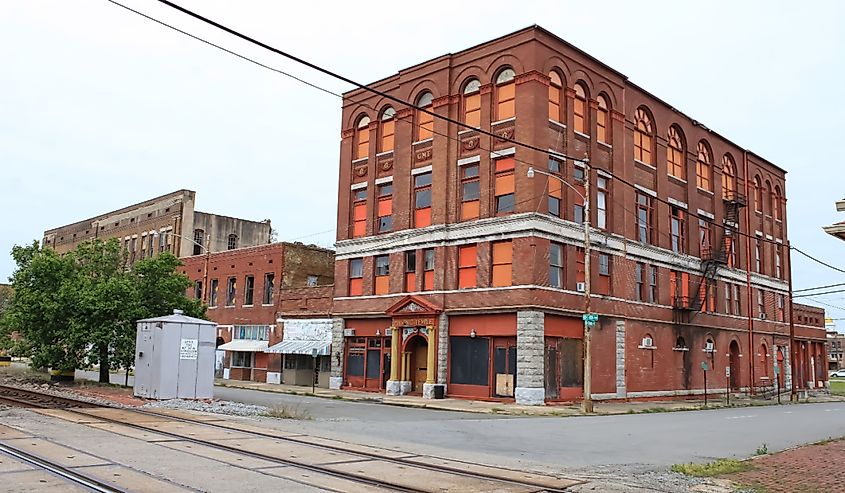
Pine Bluff is a beautiful and historic town that was first settled in 1819 by Joseph Bonne, who was an interpreter for the US government. After the Quapaw tribe ceded their lands to the US in 1824, other Americans settled in the area and developed it. Thanks to its proximity to the Arkansas River, it became a thriving port town, attracting more settlers and travelers.
In 1839, the town was incorporated, and today, visitors can learn more about its interesting history at the Pine Bluff/Jefferson County Historical Museum. Next, visit the Arkansas Railroad Museum to see a steam locomotive train, and learn more about the railroad heritage of Arkansas. For something unique, take a walk through Pine Bluff’s downtown to see the stunning murals on the exterior walls of some of the buildings.
Batesville
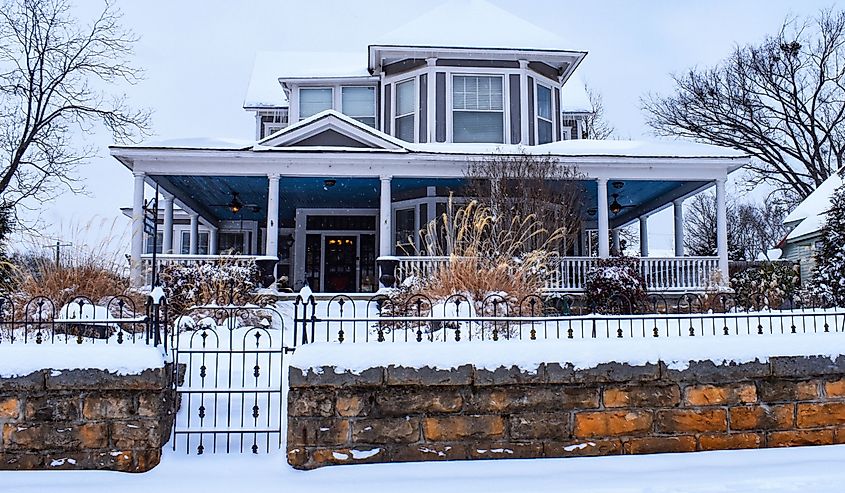
Batesville is famous for being the oldest existing town in Arkansas. This town’s origins date to 1808, when the Osage Indians ceded the territory to the US. In 1819, a territorial delegate by the name of John Bates settled in the area, becoming one of its earliest inhabitants. These days, much of this town’s historic essence is preserved in landmarks like the Old Independence Regional Museum. There is even more history to be seen in the commercial historic district, which houses a large collection of buildings listed in the National Register of Historic Places.
Some worthy mentions include the 1909 Cook Morrow House and the 1842 Garrott House, which now stands as the oldest structure in Batesville. The Melba Theater, one of the oldest theaters in Arkansas, is also in the historic district, and tourists can visit to enjoy some entertainment. If there’s still time, take a break from the history and go to Polk (or Poke) Bayou to enjoy natural scenery and water sports.
Camden

Camden's history dates back to 1782, when Spanish settlers built a trading post on an existing French post. In 1844, the town was incorporated, and it became a bustling port in the steamboat era. Camden played significant roles in the American Civil War, particularly in the Red River Campaign of 1864.
Today, an ideal first port of call for history buffs in this town should be the Poison Springs Battleground State Park, as it features historic trails and markers that reveal more about the war era and the fierce battle fought here in April 1864. Next, head to the Camden Visitors Center and Museum for a deeper dive into the town’s history. After the historic adventures, head to Sandy Beach Park to hike, ride a boat, or enjoy picnics in front of the Ouachita River.
Hot Springs
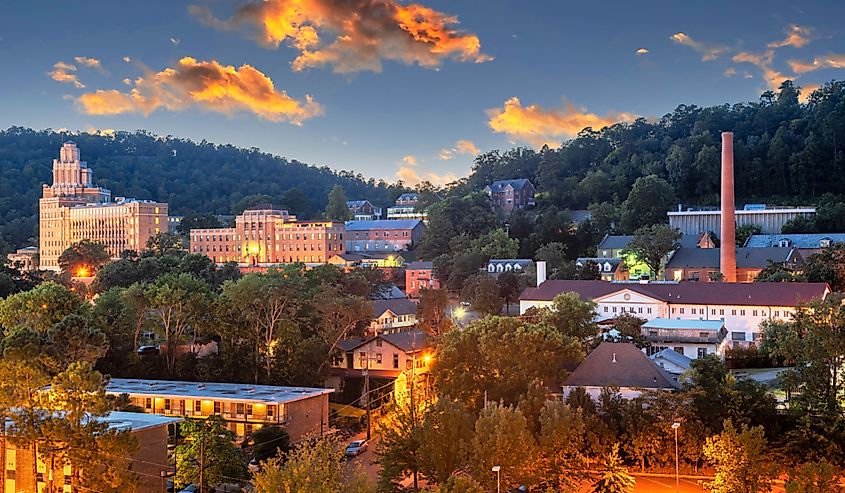
Hot Springs is one of the oldest settlements in America, with a history that dates back up to 10,000 years. For thousands of years, the hot springs in this area attracted Native Americans, and in 1541, a Spanish expedition led by Hernando de Soto became the first Europeans to relax in the hot springs. From the 17th century, the area changed hands between Spain and France until 1803, when it was acquired by the United States as part of the Louisiana Purchase. Soon, American settlers began flooding the area, further expanding the settlement. In 1832, the hot springs and the adjoining mountains of the town became a federal reserve which is now known as Hot Springs National Park.
Visitors can explore the 47 hot springs preserved in this national park, including the Bathhouse Row, which is a series of historic bathhouses along Central Avenue within the park. Away from the springs, visitors can check out some of the town’s historic hotels, such as Arlington Hotel (first opened in 1875), and Cove Tourist Court, which is now being used as residential apartments. Before leaving, visit the 216-foot tall Hot Springs Mountain Tower, which was established in 1877 and offers panoramic 360-degree views of the Hot Springs area.
Eureka Springs
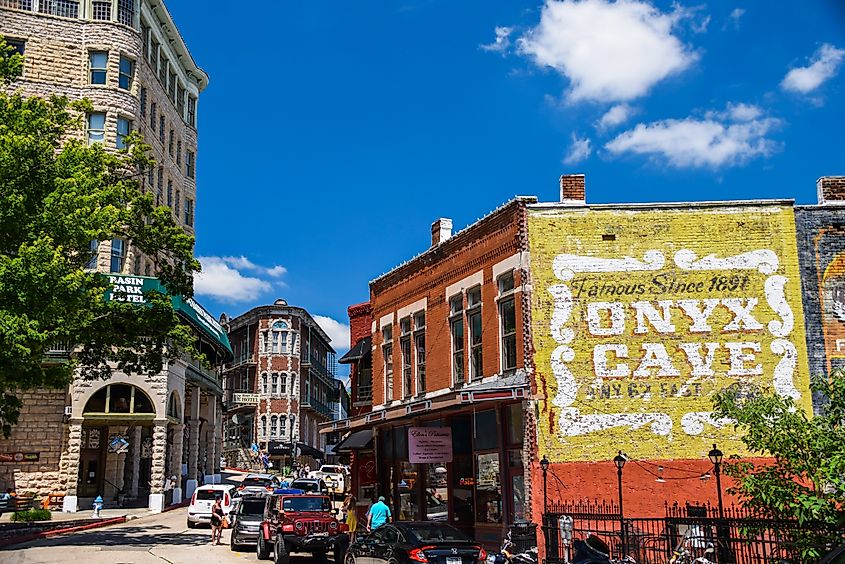
Eureka Springs is a beautiful and unique town with a history that dates back to the 1800s. Initially, the area rose to prominence for its mineral springs that attracted thousands of visitors. Almost overnight, it became a resort town, and several businesses immediately sprang up. Today, Eureka Springs is renowned as the Little Switzerland of the Ozarks, with many elegant Victorian-style structures dotting its historic downtown district. The Eureka Springs Historical Museum is one must-see attraction in this town as it offers a deeper immersion into the iconic past of the area with its varied relics, exhibits, and photography collections.
The 1886 Crescent Hotel & Spa is another historic landmark worth checking out, as it is listed on the National Register of Historic Places and is considered one of the most haunted hotels in America. Afterward, visit Blue Spring Heritage Center to see one of the largest natural springs in Arkansas and also learn about the Native American tribes that once inhabited the area.
Thumbing through the pages of history books can be fun and revealing, but diving into the true historical experience across must-see towns is simply sensational. The latter is what awaits in these small towns in Arkansas, where history takes center stage. From historic downtowns filled with 19th and early 20th-century architecture to museums featuring relics from bygone eras, there is so much history to be savored in Arkansas.











